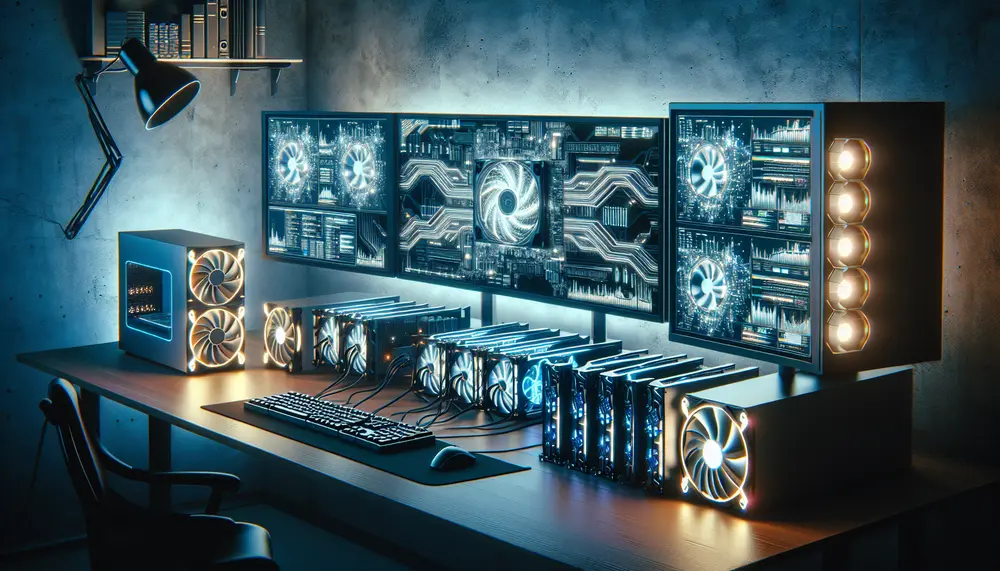Table of Contents:
Introduction to Crypto Currency Mining Explained Basics of Crypto Mining Understanding the Blockchain Role of Miners in the Network Hardware Requirements for Mining Advanced Mining Techniques Environmental Impact of Cryptocurrency Mining Mining in Pools vs. Solo Mining Future of Crypto Mining Conclusion: Is Crypto Mining Right for You?
Crypto currency mining is a fascinating process that underpins the entire world of digital currencies. It involves solving complex mathematical puzzles to validate transactions and add them to a public ledger known as the blockchain. This process not only secures the network but also rewards miners with new coins, making it a lucrative endeavor for many.
At its core, crypto mining is about maintaining the integrity of the blockchain. The blockchain is a decentralized database that records all transactions across a network of computers. Each block in the chain contains a list of recent transactions, and miners compete to solve a cryptographic puzzle to add the next block to the chain.
Get $500 free Bitcoin mining for a free testing phase:
- Real daily rewards
- 1 full month of testing
- No strings attached
If you choose to buy after testing, you can keep your mining rewards and receive up to 20% bonus on top.
The role of miners is crucial. They ensure that transactions are legitimate and prevent double-spending, which is a significant concern in digital currency systems. By doing so, miners help maintain trust in the network and ensure its smooth operation.
Mining requires specialized hardware. Initially, CPUs were sufficient, but as the difficulty of mining increased, GPUs and ASICs became necessary. These devices are designed to perform the repetitive calculations needed for mining efficiently.
Advanced mining techniques have emerged as the industry has evolved. These include optimizing hardware settings, using custom firmware, and participating in mining pools to increase the chances of earning rewards. However, mining also has an environmental impact due to the significant energy consumption required to power the hardware.
Miners can choose between mining in pools or solo mining. Pool mining involves collaborating with other miners to solve blocks collectively, sharing the rewards based on contributed work. Solo mining, on the other hand, means competing alone, which can be more challenging but potentially more rewarding.
The future of crypto mining is uncertain but promising. As technology advances, new methods and equipment will likely emerge, making mining more efficient and accessible. However, regulatory changes and environmental concerns may also shape the industry's trajectory.
In conclusion, crypto mining can be a rewarding venture for those willing to invest in the necessary hardware and knowledge. It plays a vital role in maintaining the security and decentralization of digital currencies, but it's essential to weigh the potential rewards against the environmental and financial costs.
Understanding Cryptocurrency Mining
What is cryptocurrency mining?
Cryptocurrency mining is the process of validating transactions and adding them to a blockchain by solving complex mathematical puzzles. This ensures network security and generates new coins, rewarding miners for their efforts.
How does the blockchain relate to mining?
The blockchain is a decentralized public ledger that records all transactions across a network. Miners solve cryptographic puzzles to add new blocks to the chain, maintaining its integrity and preventing double-spending.
What equipment is needed for mining?
Initially, mining could be done with CPUs, but the increasing difficulty has necessitated the use of GPUs and ASICs. These specialized pieces of hardware perform the complex calculations required for efficient mining.
What are mining pools?
Mining pools are collective groups of cryptocurrency miners who share their processing power over a network, splitting the reward equally according to the amount of work they contributed to finding a block.
What is the future of cryptocurrency mining?
The future of cryptocurrency mining is promising but uncertain, with advancements in technology making it more efficient. However, regulatory changes and environmental concerns might influence its evolution and sustainability.






